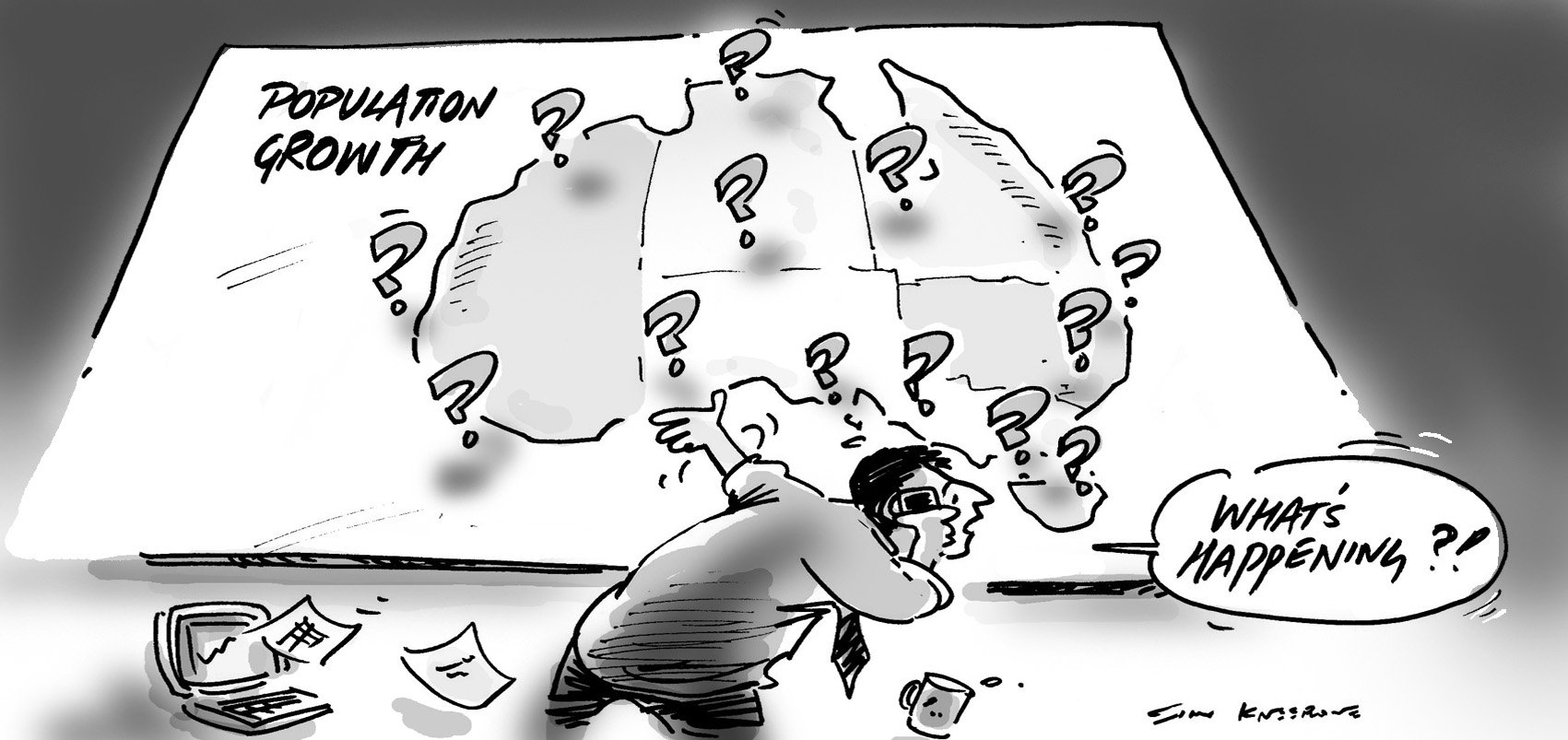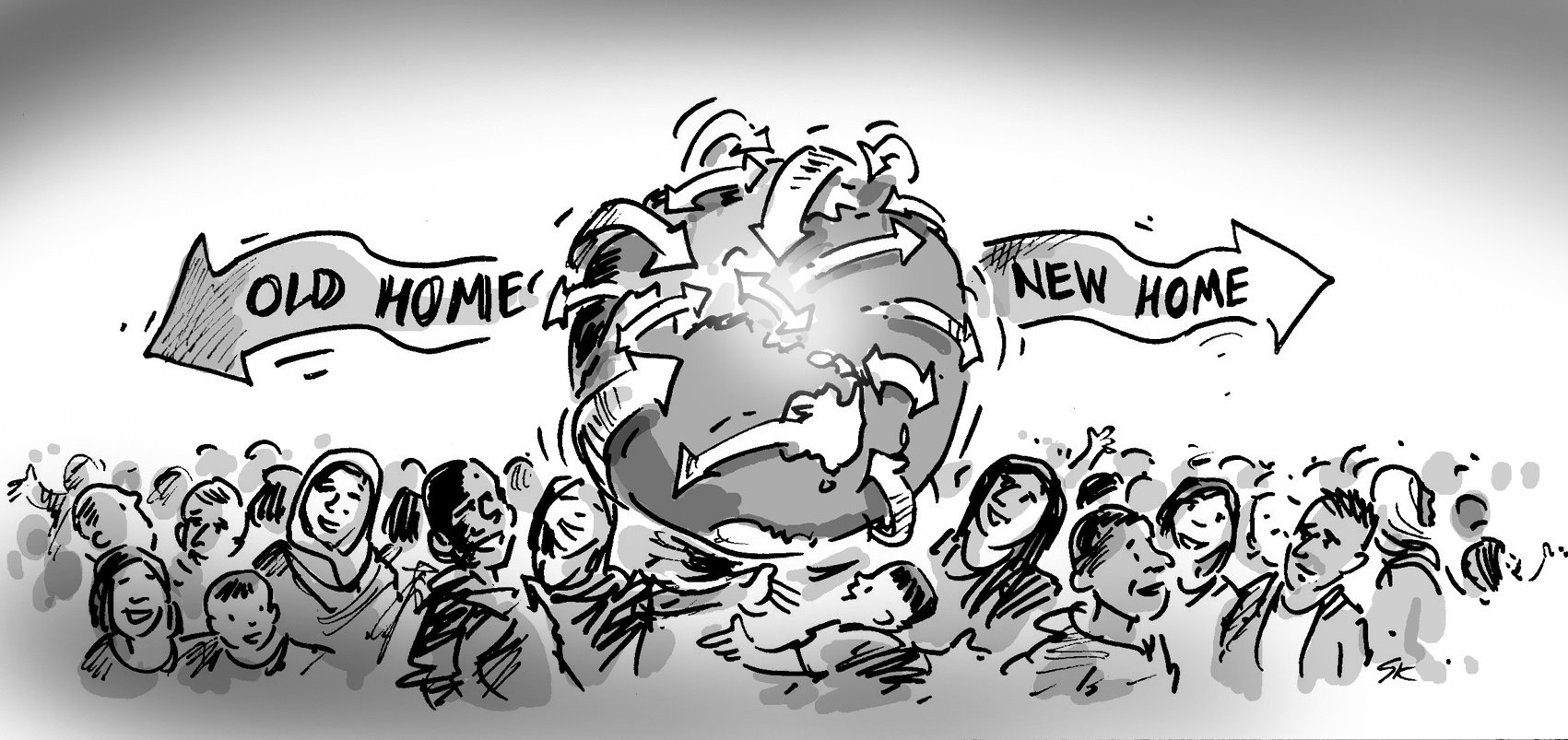BLOG
Australia’s low population growth increases slightly in the June 2021 quarter
Australia’s low population growth increases slightly in the June 2021 quarter
The latest data shows Australia’s population growth increasing slightly in the June 2021 quarter. Glenn analyses the data in relation to COVID-19 and the different drivers of change across the states and territories.
The latest ABS figures for Australia’s population by state and territory are out for the June quarter 2021. This is an important release, which always sneaks in just before Christmas. It’s the full financial year of population data, and it’s the same time period as the local population estimates, which come out each March.
At June 30th, 2021, Australia’s population stood at 25,573,256 – up by 0.18% (+45,989 people) in a year. Our previous blog, for the year ended March, showed 0.14% population growth. So the June quarter just picked up slightly from the very low COVID-affected growth of previous quarters. But it is still the lowest percentage growth since the population declined during World War I (1916). The quarterly growth was 34,300 people, so the June quarter made up most of the year’s growth.
This is what it looks like over the past 25 years of population growth. You can see the immediate effect of COVID-19 over the 2020 and 2021 years.
Annual population growth and building approvals, Australia, 1997–2021

Source: ABS National State and Territory Population, and Building Approvals June 2021
The chart also shows building approvals, which declined, though nowhere near as much as population growth for the year – and was supported by schemes such as HomeBuilder.
Overseas migration is the key driver for population growth Australia
The main reason for this large drop in population growth nationally was net overseas migration. While in recent years this has run at around 250,000+ p.a., there was a net loss of 88,800 migrants in 2020–21 (ie. a lot more people left the country than arrived to stay long-term). This is primarily due to the border closures for COVID, which have only very recently started to be relaxed. Nevertheless, the June quarter wasn’t as bad as early in the pandemic – most people who were going to leave had already done so – and it’s back to almost even, with a net loss of 2,320 migrants for the quarter.
Annual net overseas migration, Australia, 1986–2021

Source: ABS National State and Territory Population
Population change differs significantly across states and territories
The difference in states and territories remains enormous. Queensland continues to grow strongly, at 0.9% for the year (but still below previous years). Victoria has now had four successive quarters of population decline, down by 0.7%, or 44,700 people for the year. However the last quarter was only a tiny fall of 282 people, so this decline has slowed substantially.
This table, similar to those we’ve published before, covers all the key numbers for annual and quarterly growth by the states and territories.
| State/Territory | Population June 2021 | Annual change | Annual change % | Quarterly change June 2021 | Quarterly natural increase | Quarterly overseas migration | Quarterly interstate migration |
|---|---|---|---|---|---|---|---|
| New South Wales | 8,189,266 | +22,242 | 0.27% | +13,887 | +11,663 | +4,515 | -2,291 |
| Victoria | 6,649,159 | -44,699 | -0.67% | -282 | +8,827 | -5,517 | -3,592 |
| Queensland | 5,221,170 | +45,925 | 0.89% | +14,292 | +7,747 | -307 | +6,852 |
| South Australia | 1,773,243 | +2,966 | 0.17% | +1,291 | +1,546 | +148 | -403 |
| Western Australia | 2,681,633 | +17,421 | 0.65% | +4,856 | +5,047 | -523 | +332 |
| Tasmania | 541,479 | +943 | 0.17% | -130 | +364 | -167 | -327 |
| Northern Territory | 246,338 | +103 | 0.04% | -242 | +701 | -03 | -940 |
| ACT | 432,266 | +1,053 | 0.24% | +660 | +755 | -464 | +369 |
| Australia | 25,739,256 | +45,989 | 0.18% | +34,339 | +36,659 | -2,320 | 0 |
Source: ABS National State and Territory Population
The swing back to positive territory is particularly noticeable for NSW, which grew almost as much as Queensland for the quarter. On the other hand, Tasmania – which had continued growing through the pandemic – has returned to marginal population decline. South Australia – which had been benefiting from an influx of interstate migrants (or less people leaving) – has turned back into negative territory, though the overall population change is still positive. New South Wales and South Australia are the only two states recording a net positive overseas migration (more people arrived than left).
Percentage change in population growth by state/territory, year ended June 30th, 2021

Source: ABS National State and Territory Population
There were significant COVID lockdowns after the June quarter
What’s possibly most interesting about this shift back towards slight population growth is that most of Australia’s recent issues with COVID (lockdowns etc) happened after this date. At June 30th, we were at the end of the COVID-Zero “interval” which most of Australia enjoyed (punctuated by the odd short lockdown) during a lot of the first half of 2021. Victoria had just emerged from Lockdown#4 (with two to come) and NSW was just starting the devastating “Limo driver” delta wave, which drove the long lockdown there. How much these developments in the pandemic affect the population growth over the following two quarters remains to be seen with the next datasets.
And, of course, we had a Census in August 2021. These population figures will be all subject to review once the Census results are known. The ABS will tally up population based on the new base data, and revise all of the past 5 years in that light. Sometimes this can change things quite a bit. Here at .id, we’ll continue to put the latest population data for local areas in the profile.id and economy.id sites, and your population forecasts contain the latest information on population trends and their likely impact on future population. Census 2021 data rollout commences June 2022 for all our clients.
Stay tuned – And have a great Christmas and New Year! Just a reminder that the .id office is closed from 24th December, and reopens on January 4th.
Glenn Capuano - Census Expert
Glenn is our resident Census expert. After ten years working at the ABS, Glenn's deep knowledge of the Census has been a crucial input in the development of our community profiles. These tools help everyday people uncover the rich and important stories about our communities that are often hidden deep in the Census data. Glenn is also our most prolific blogger - if you're reading this, you've just finished reading one of his blogs. Take a quick look at the front page of our blog and you'll no doubt find more of Glenn's latest work. As a client manager, Glenn travels the country giving sought-after briefings to councils and communities (these are also great opportunities for Glenn to tend to his rankings in Geolocation games such as Munzee and Geocaching).









